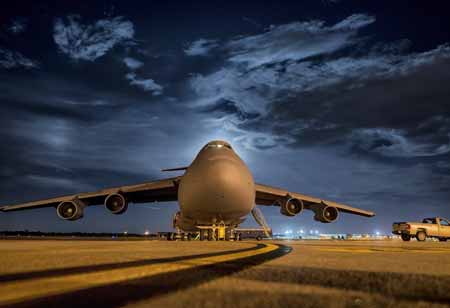THANK YOU FOR SUBSCRIBING
THANK YOU FOR SUBSCRIBING

By
Logistics Transportation Review | Friday, October 06, 2023
Stay ahead of the industry with exclusive feature stories on the top companies, expert insights and the latest news delivered straight to your inbox. Subscribe today.
Ever-evolving landscape of last-mile logistics with its 7 key trends shaping the shipment sector.
FREMONT, CA: The landscape of last-mile logistics is undergoing a profound shift, driven by today's consumers' rising expectations and demands. In fact, a staggering 25 per cent of customers are now willing to pay extra for the convenience of same-day delivery. Looking ahead, it is projected that by 2025, same-day delivery will claim a remarkable 25 per cent share of the market.
Shippers must be aware of the following trends in last-mile logistics to get a competitive edge.
Last Mile Logistics Gets Faster Fulfillment
Timelines for fulfilment are evolving. Customers want their orders filled more quickly, and shippers must move more merchandise quickly. Shipments that once took an hour to handle are now required to do so in three-minute intervals or sooner.
As a result, last-mile logistics is now able to contribute to the movement towards quicker fulfilment. According to McKinsey & Company, a large majority of millennials are willing to pay more for assured delivery and are willing to pay up to 30 per cent more for same-day delivery. In conjunction with the sudden surge in parcel delivery, last-mile delivery is expected to sustain a robust annual growth rate of 10 per cent.
Supply Chain Disruptors Impact Last Mile Logistics
Supply chain disruptors like venture capitalist start-ups are impacting last-mile logistics. Up to 84 per cent of all freight costs, including fuel, labour, technology, and asset tracking, are incurred by the trucking sector, totalling more than $800. Amazon is already making visible progress in developing and running a trucking-related version of Uber. There are many examples of supply chain disruptors failing in the tech world, but the trend is apparent, and there are few signs of reversion.
Shippers Turn to Smart Tech for Tracking
The use of Uber-like apps suggests yet another influence and development in last-mile logistics: the application of cutting-edge technology for tracking. Smart technology and sensors can successfully track shipments in real time using the Internet of Things (IoT).
For each package move, customers and shippers can get SMS alerts, email notifications, and even Google notifications. The usage of smart technology to monitor last-mile logistics will increase, especially in light of the impending electronic logging devices (ELD) regulation.
Analytics Will Drive Last Mile Logistics Costs Down
When utilised through analytics, the volume of data generated by automated systems and intelligent technology might serve another purpose. Supply chain organisations can identify the elements that affect costs across all shipments using analytics. Although minor adjustments might not have a significant influence on initial prices, data analytics offer a way to reduce costs to negligible levels. The entire cost of last-mile delivery can be reduced as a result, enticing more customers to use same-day delivery and quicker delivery choices.
Insourcing Reaches Into Last Mile Logistics
Outsourcing, especially among companies engaged in providing third-party logistics (3PL) services. The swift surge in last-mile deliveries has led more shippers to consider outsourcing these specific services. In essence, shippers utilise their own vehicles to reach local and immediate customers. However, considering that 90 per cent of shippers operate with fewer than six trucks, outsourcing may become a necessity to broaden the array of last-mile delivery options available to shippers.
Autonomous Vehicles and Trucks (AVs and AT), Drones and Robotic Delivery
AVs and ATs, also referred to as autonomous vehicles or trucks, will have an impact on last-mile logistics. In order to increase last-mile delivery alternatives while maintaining high reliability and same-day delivery in urban and rural locations, self-driving cars, drones, and robots will become essential.
Within the next two years, however, it is unlikely that widespread implementation of driverless delivery solutions will be possible due to current laws surrounding the trucking business.
Drivers Becoming Merchants
Shippers must figure out how to reach more shoppers and persuade them to become customers. Although up to 65 per cent of all transactions involve online research before making a decision, placing information and goods in front of customers continues to be the most effective strategy to promote this conversion.
The function of the driver will change as technology becomes faster and better and includes driverless trucks. Drivers will start operating businesses, selling goods off of trucks.
Hence, the world of last-mile logistics is in the midst of a profound transformation driven by several significant trends. From the surge in e-commerce and the demand for sustainable practices to the integration of advanced technology and the evolution of delivery methods, these trends are reshaping the way goods reach their final destinations.
I agree We use cookies on this website to enhance your user experience. By clicking any link on this page you are giving your consent for us to set cookies. More info





